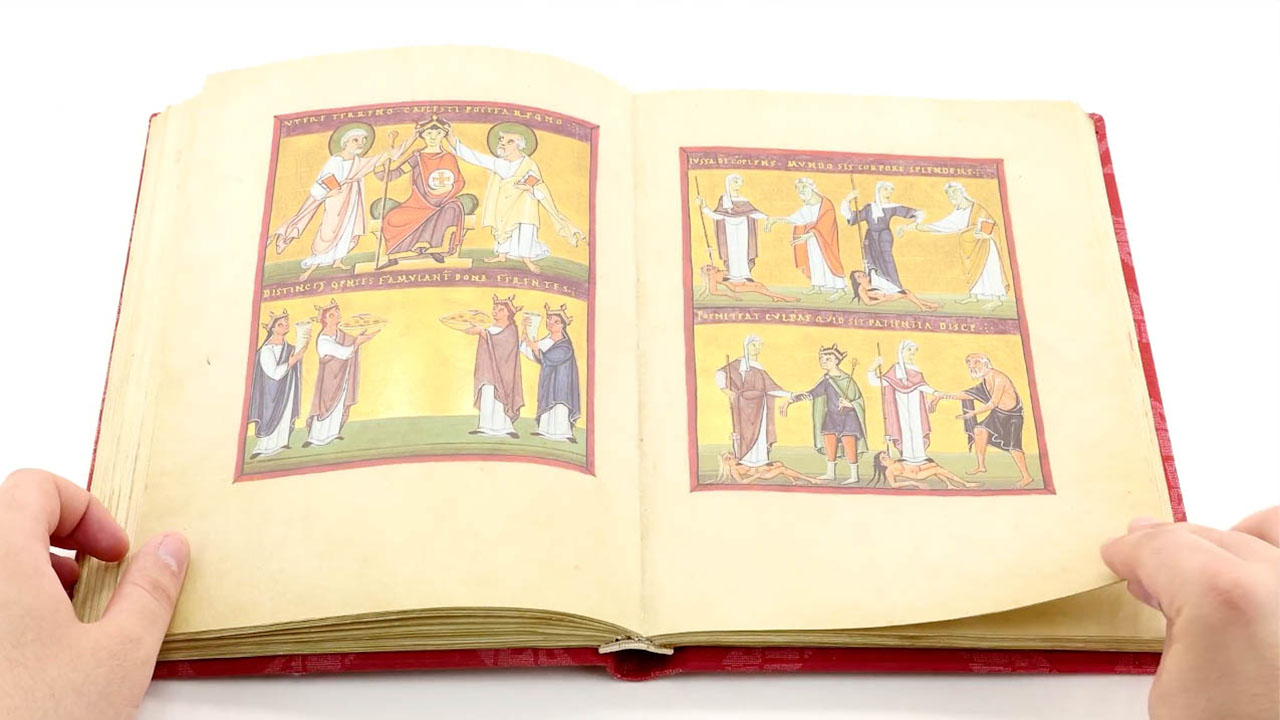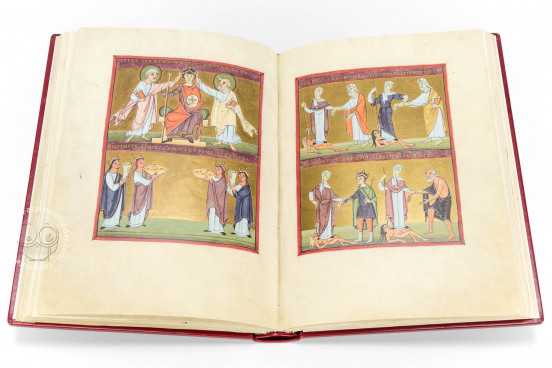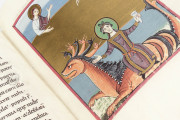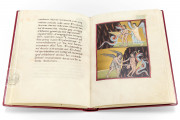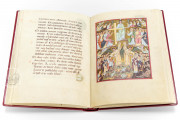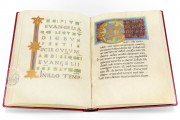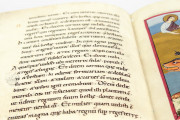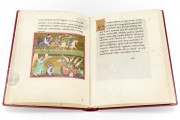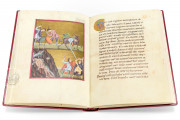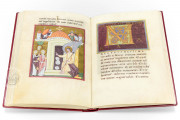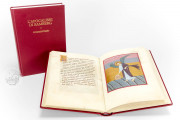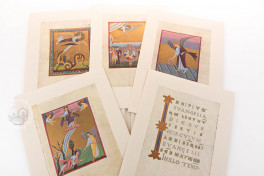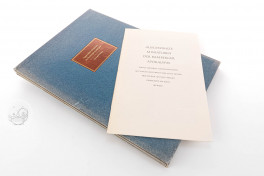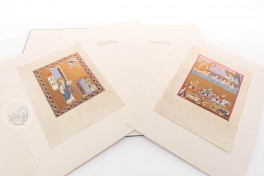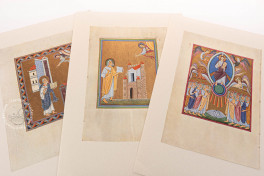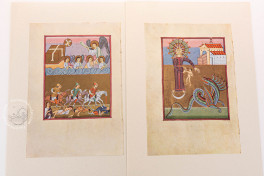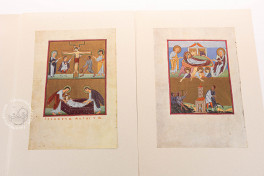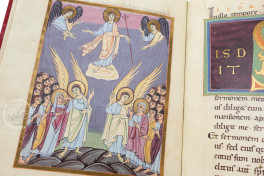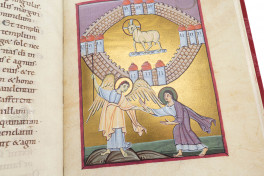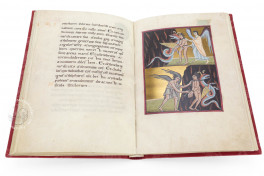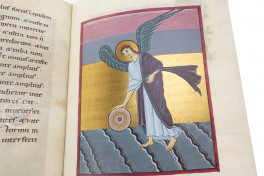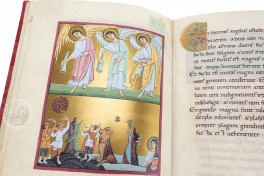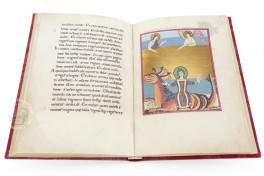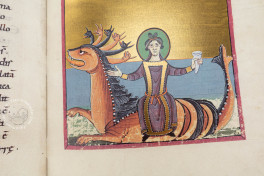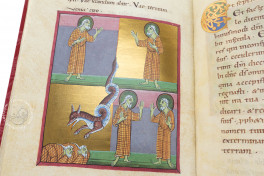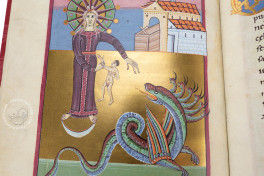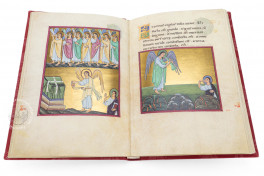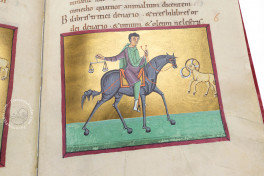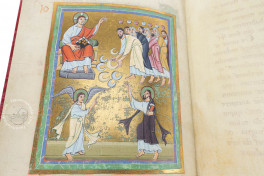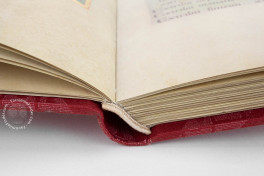The Bamberg Apocalypse is one of the finest achievements of Ottonian manuscript illumination. It contains the Christian biblical book of the Apocalypse—Saint John the Divine's vision of the events leading to the end of time—and lections from the Gospel accounts of the life of Christ. Created at the Benedictine monastery on the island of Reichenau in the first quarter of the eleventh century, the manuscript is justly famous for its illumination, which comprises fifty-seven masterfully painted miniatures shimmering with gold.
The book's illumination is stylistically related to that of two books made for Ottonian emperors, the Gospels of Otto III and the Pericopes of Henry II. The three manuscripts are members of the Liuthar group, named after the scribe of yet another imperial manuscript (Aachen, Domschatzkammer).
Made for an Emperor
Between the two portions of the manuscript is a magnificent pair of facing miniatures. The left-hand image depicts a ruler being crowned by Saints Peter and Paul and receiving tribute from personifications of his lands. On the facing page is an image of Old Testament figures vanquishing vices (fols. 59v-60r). The manuscript is believed to have been created for the pictured ruler. There is, however, no true consensus as to his identity—whether Otto III (980-1002) or his successor as Holy Roman Emperor, Henry II (973-1024). It is possible that work on the book began with Otto as the intended recipient and was completed during Henry's reign.
Calm yet Terrifying
The Bamberg Apocalypse is unique in its approach to illustrating the often-violent events of Saint John's vision. The presentation is economical yet monumental, with the terror of the episodes expressed principally through imposing figures, their facial expressions, and the exaggerated gestures of their oversized hands.
The miniature of the confrontation between the woman clothed in the sun and the dragon, for example, presents the two figures before a large field of gold leaf. The depicted woman transfixes our attention with her stare, and she protects her newborn son from the dragon with her outstretched hand (fol. 29v).
From the End of Time to the Incarnation
The manuscript's program of illumination takes an abrupt turn after the ruler portrait, which separates the book's two portions. Unlike the Apocalypse miniatures, the five paintings in the lectionary—while expertly painted—are conventional, following well-established norms for Ottonian illumination.
Characteristic Ottonian Initials
The text of the Apocalypse is divided into sections marked by large painted initials of stylized gold vines interlacing through latticework placed against blue and green fields of color. Each Gospel lection is introduced by a decorated initial of the same type, and the readings for Christmas Eve, Easter, Ascension, and Pentecost have their opening text in gold display script on purple grounds (fols. 62r, 70r, 70v, and 72r).
Registered by UNESCO
Henry II, Holy Roman Emperor, and his consort, Cunegunda (d. 1033), Empress, donated the manuscript to the collegiate church of Sankt Stephan in Bamberg, which they founded in 1020. It then had a treasure binding, from which a carved agate survives (Munich, Schatzkammer der Residenz).
The book entered the Staatsbibliothek at its founding in 1803, received its present binding in 1960, and was added to the UNESCO Memory of the World Register in 2003. The library characterizes the manuscript as the most important in its collection.
We have 3 facsimiles of the manuscript "Bamberg Apocalypse":
- Ausgewählte Miniaturen der Bamberger Apokalypse facsimile edition published by Insel Verlag, 1961
- Bamberger Apokalypse facsimile edition published by Faksimile Verlag, 2000
- Apocalisse di Bamberg facsimile edition published by Salerno Editrice, 2002

